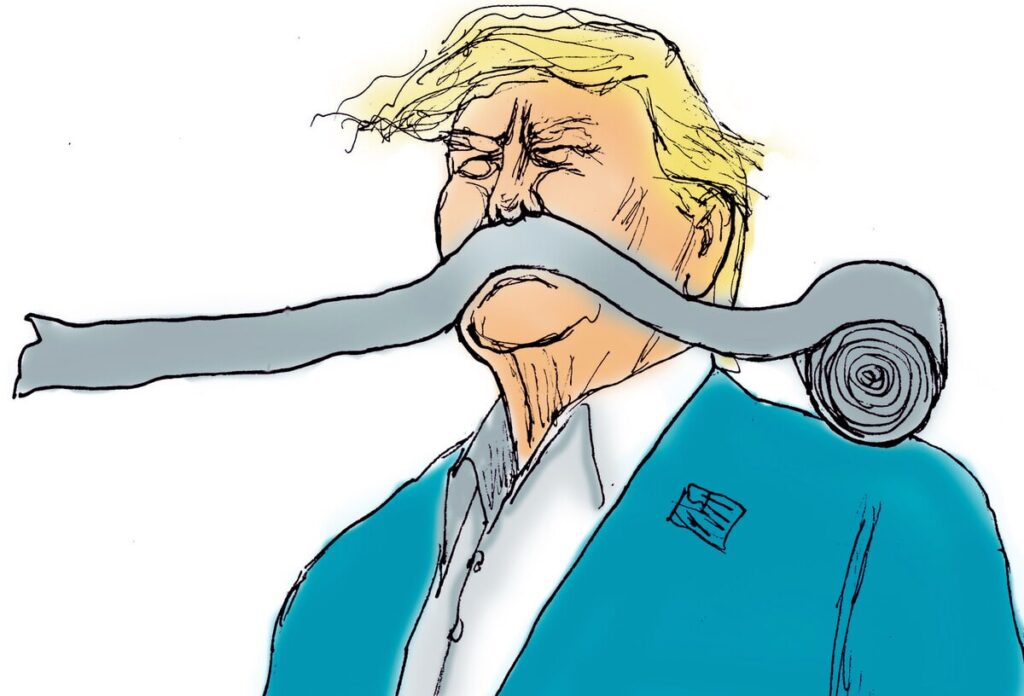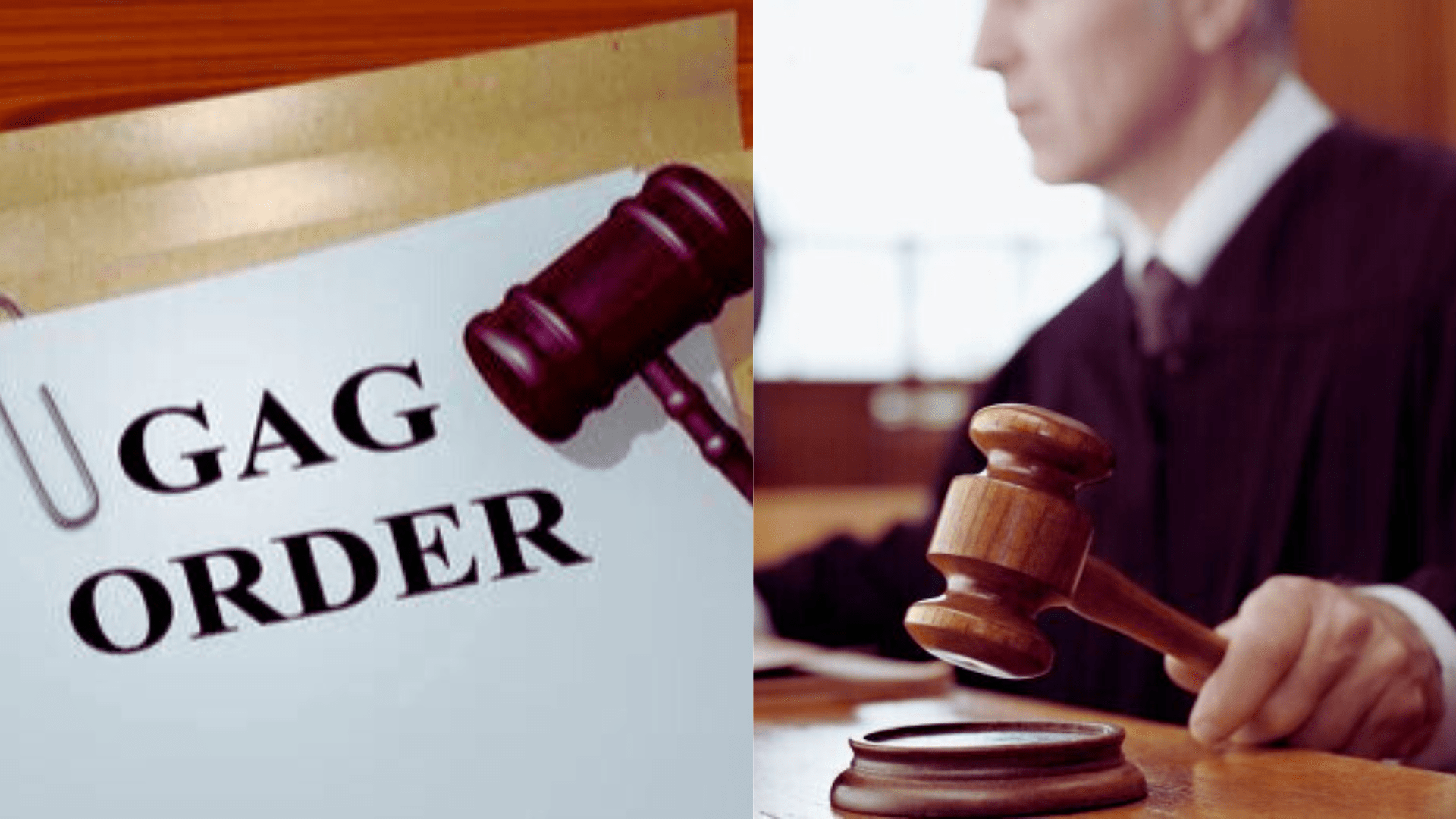Introduction to Gag Orders
A gag order, formally known as a non-dissemination order, is a court-imposed restriction that limits what information about a trial or preliminary proceedings can be made public or discussed. It’s typically applied to prevent witnesses, parties, or attorneys involved in a pending lawsuit from speaking about the case to the public. The primary purpose of a gag order is to ensure a fair trial by minimizing pre-trial publicity that could influence the jury’s decision-making process or protect sensitive information from being disclosed. Judges issue gag orders under specific legal criteria, aiming to balance the need for a fair trial with the public’s right to information and freedom of speech.
The Legal Basis of Gag Orders
Gag orders are judicial directives that restrict the parties, attorneys, or witnesses in a legal case from speaking publicly about the proceedings. They serve to balance two fundamental rights: the First Amendment’s protection of free speech and the constitutional right to a fair trial. The primary legal basis for gag orders arises from the court’s interest in ensuring the integrity of the trial process. By limiting pre-trial publicity, courts aim to prevent potential jury bias and maintain the fairness of the proceedings. However, the issuance of gag orders must tread carefully to not infringe upon the First Amendment rights excessively. Therefore, gag orders are subject to strict scrutiny, especially when they impact the press or public discourse outside the courtroom. Courts often justify gag orders on the principle that trials should be conducted in courtrooms rather than through public opinion, ensuring that the legal process is not compromised by external influences.
The Purpose Behind Gag Orders
Gag orders are judicial directives used to restrict information from being publicized during a legal proceeding. The primary purposes behind issuing gag orders include:
- Preventing Prejudice: Ensuring that potential jurors are not influenced by media coverage or public opinion, thereby preserving the integrity of the trial process.
- Protecting Participants: Safeguarding the privacy and rights of the parties involved in the case, including witnesses and victims, from undue harm or harassment.
- Controlling Publicity: To manage the flow of information to the public and prevent any detrimental effects on the case outcome that might result from unchecked public discourse.
In essence, gag orders aim to balance the right to a fair trial with the principle of free speech, ensuring that legal proceedings are conducted fairly and without external interference.
Types of Gag Orders
Criminal Proceedings Gag Orders

In criminal proceedings, gag orders are judicial commands that prohibit parties, attorneys, witnesses, and sometimes the media from discussing case details publicly. The main objectives of these orders include:
- Ensuring a Fair Trial: Gag orders aim to protect the defendant’s right to a fair trial by limiting pretrial publicity that could influence the jury pool and affect the trial’s outcome.
- Protecting Privacy: They help safeguard the privacy of all parties involved, including victims, defendants, and witnesses, by restricting the dissemination of sensitive information.
- Maintaining Order: Courts issue gag orders to manage the flow of information and maintain order within the judicial process, ensuring that trials are conducted according to law, rather than through public opinion or media influence.
Gag orders in criminal proceedings balance the need for a fair judicial process with the principles of free expression, highlighting the delicate interplay between the right to a fair trial and the freedom of speech.
Civil Case Gag Orders
In civil cases, gag orders are issued by judges to restrict the parties involved, their attorneys, or witnesses from speaking about the case to the public or media. The primary purpose is to ensure the integrity of the judicial process by:
- Preventing Prejudice: Limiting public exposure to case details helps prevent the formation of biases that could influence the outcome of the case.
- Protecting Privacy: Gag orders safeguard the privacy of the parties involved, which can be crucial in sensitive cases such as those involving family matters or trade secrets.
- Maintaining Order in the Courtroom: By controlling the flow of information, gag orders help to maintain order and decorum within the courtroom and the legal process at large.
These orders balance the right to a fair and unbiased trial with the principles of freedom of speech and the public’s right to information.
National Security Gag Orders
National Security Letters (NSLs) often include gag orders that legally prevent recipients from disclosing the receipt of the letter or any details about it. These gag orders are issued without probable cause or judicial oversight, raising concerns about their impact on free speech and transparency. They restrict the ability of recipients to acknowledge they have been targeted for information by the FBI, challenging First Amendment protections. Notably, a federal court ruling identified that permanent gag orders under the NSL law violated free speech rights, spotlighting the tension between national security measures and constitutional rights.
The Process of Issuing a Gag Order
Who Can Issue a Gag Order?
Gag orders can be issued by courts, government entities, or even private entities. In the context of legal proceedings, they are typically ordered by a judge. These orders are used to restrict parties, attorneys, witnesses, or jurors involved in a trial or criminal prosecution from speaking publicly about the case. The primary goal of a gag order in legal settings is to ensure a fair trial by limiting pretrial publicity that could influence the jury or public perception. Additionally, although less common, private entities can impose gag orders through agreements, particularly in situations involving sensitive or proprietary information.
The Criteria for Issuing a Gag Order
To be constitutional and legally enforceable, a gag order must meet specific criteria, which include being narrowly tailored and serving a compelling state interest. This often involves balancing the right to a fair trial with the First Amendment rights of free expression. The issuance of a gag order involves scrutiny by a court to ensure that it does not unjustly restrict free speech more than is necessary to protect the integrity of the judicial process or the safety and privacy of involved parties. The underlying rationale for a gag order typically revolves around preventing the potential intimidation of the court or jury, avoiding the tainting of a jury pool, or protecting sensitive information from public disclosure during a trial or preliminary proceedings.
The Controversy Surrounding Gag Orders
Arguments in Favor
Arguments in favor of gag orders primarily revolve around ensuring the integrity of legal proceedings and protecting the rights and privacy of those involved. Here are key points supporting their use:
- Preservation of Fair Trials: Gag orders help maintain the fairness of trials by preventing pre-trial publicity that could influence the jury’s opinion and affect the trial’s outcome.
- Protection of Sensitive Information: They safeguard sensitive information, ensuring it does not become public and compromise the legal process or the privacy of individuals involved in the case.
- Minimizing Prejudicial Publicity: Gag orders aim to reduce prejudicial publicity that could adversely affect the legal proceedings and the rights of the parties involved to a fair trial.
- Balancing Free Speech and Fair Trials: While recognizing the importance of free speech, gag orders are seen as a necessary tool to balance the right to free speech with the right to a fair trial, by limiting public commentary that could jeopardize the fairness of court proceedings.
Arguments Against
Arguments against gag orders often center on concerns about freedom of speech and the potential for abuse in silencing dissent. Key criticisms include:
- Potential for Unconstitutionality: Critics argue that gag orders can infringe on the First Amendment rights of those involved in legal proceedings, deeming them virtually always unconstitutional due to their restrictive impact on free speech.
- Erosion of Public Trust: By limiting transparency, gag orders can erode public trust in the judicial system, as they may appear as attempts to conduct trials away from public scrutiny and oversight.
- Impediment to Academic Freedom: In the context of education, gag orders (or legislative equivalents) can stifle academic freedom and discussions, thereby imposing undue governmental control over educational content and teaching methods.
- Concerns Over Selectivity and Fairness: Criticisms also focus on the selective application of gag orders and whether they are applied fairly across different cases, raising concerns about bias and inconsistency in their enforcement.
The Controversy Surrounding Gag Orders
Freedom of Speech Concerns
The controversy surrounding gag orders often highlights a tension between the right to a fair trial and the principle of freedom of speech. Critics argue that gag orders can impinge on this fundamental freedom by restricting what can be said about a legal case. Key points include:
- Fair Trials vs. Free Speech: Gag orders are justified as a means to ensure fair trials by limiting pre-trial publicity that could influence jurors. However, this practice raises questions about restricting speech to protect the integrity of judicial proceedings.
- First Amendment Concerns: There’s a concern that gag orders may bypass First Amendment protections, as they control the outflow of information from trials, potentially suppressing public discourse and criticism of the legal process.
- Arguments of Unconstitutionality: Some legal scholars argue that gag orders on trial participants are almost always unconstitutional, highlighting a strong disagreement with the practice due to its impact on free speech rights.
- The Limits of Free Speech: While free speech is a constitutional right in the USA, it’s not absolute. Gag orders are seen as a legal tool that balances this right against the need for a fair trial, illustrating the complex relationship between individual rights and judicial integrity.
Transparency in the Legal System
The controversy surrounding gag orders primarily focuses on the balance between the need for transparency in the legal system and the protection of privacy or national security. Transparency is crucial for public trust and accountability, fostering an environment where actions and decisions are open to scrutiny. However, gag orders can sometimes be seen as impeding this transparency, especially when they prevent the discussion or disclosure of certain information in legal proceedings.
- Balancing Act: Gag orders require a fact-specific inquiry to balance transparency with what needs to be protected, suggesting a complex interplay between various legal and ethical considerations.
- Public Perception and Fairness: Transparency in judicial documents is linked to ensuring fairness, reducing bias, and improving public perception of the justice system.
- Secrecy Concerns: The concept of secrecy is generally opposed in open societies, where openness is a valued principle. This tension underlies the debates over gag orders and their implications for transparency.
Famous Cases Involving Gag Orders
Case Study 1

Gag orders are judicial orders prohibiting the parties involved in a legal proceeding from discussing case details, used to ensure a fair trial by limiting pretrial publicity. Two notable cases involving gag orders include:
- Donald J. Trump’s Criminal Trial: A New York judge imposed a gag order in one of Donald J. Trump’s criminal trials, restricting discussions that could affect the proceedings.
- Idaho Murders Case: In the high-profile case concerning the Idaho murders, a gag order was issued to prevent commentary on evidence, the character or criminal record of a party, and opinions about the guilt or innocence of the accused, aiming to protect the integrity of the judicial process.
These cases highlight the tension between maintaining the integrity of legal proceedings and the right to free speech, illustrating the complex considerations at play in the issuance of gag orders.
Case Study 2
One of the most notable recent instances involving gag orders concerns former President Donald Trump. Specifically, in a New York hush-money case, a judge issued a gag order barring Trump from making public statements about witnesses, prosecutors, court staff, and jurors related to the trial. This gag order is particularly significant due to the high-profile nature of the defendant and the extensive public and media interest in the case. The implementation of such a gag order highlights the judiciary’s effort to ensure a fair trial by mitigating the potential prejudicial effects of public statements on the proceedings.
How to Respond to a Gag Order
Legal Recourse
When faced with a gag order, individuals and their legal teams have specific avenues to respond to or challenge such directives. Here are the primary steps to consider:
- Review the Order: Understand the specifics of the gag order, including its scope and the legal rationale behind its issuance.
- Legal Challenge: If the gag order is believed to be unjust or overly restrictive, it can be challenged in court. A lawyer can file a motion to modify or dismiss the gag order, arguing its impact on free speech or its necessity for ensuring a fair trial.
- Balancing Rights: The court will conduct a fact-specific inquiry to balance the need for a fair trial against the First Amendment rights of the parties involved. This involves assessing what the gag order protects and whom it affects.
Challenging a gag order is a nuanced process that requires careful legal strategy to ensure the rights of all parties are considered and upheld.
Public Response
Responding to a gag order, especially for those outside the immediate legal battle, involves understanding the implications and navigating carefully within legal constraints:
- Awareness and Education: Educate yourself and others about gag orders and their impact on free speech and public information. Awareness campaigns can highlight concerns without breaching the specifics of the gag order.
- Advocacy and Legal Challenges: Support or engage in legal efforts to challenge overly broad or unjust gag orders. This can involve backing organizations or legal teams that specialize in privacy, cyber, and data strategy, and often challenge such orders.
- Promoting Transparency: Encourage and support policies that promote transparency and accountability, especially in the public sector, where the public’s right to know is fundamental.
- Direct Communication: For entities under a gag order, finding permissible ways to communicate about the issue without violating the order, like speaking on general terms about the subject matter, can be a viable approach.
Engagement in public discourse about gag orders should be thoughtful, aiming to respect legal boundaries while advocating for transparency and freedom of speech.
Conclusion
Gag orders, with their shades of gray, play a controversial yet crucial role in our legal system. They serve as a tool to balance the scales of justice, ensuring fair trials and protecting sensitive information, even as they stir debate over their impact on freedom of speech and transparency.
Final Thoughts on Gag Orders
As we navigate the complexities of law and order, gag orders remind us of the delicate balance between the public’s right to know and the necessity of maintaining justice’s integrity. Like a tightrope walker, the legal system must carefully tread this line, ensuring that neither side is disproportionately favored.
Read also: What Happened in Baltimore: Collapse of Francis Scott Key Bridge
FAQs
Q. Can anyone challenge a gag order?
Yes, parties directly affected by a gag order can typically challenge it through legal means, such as filing an appeal.
Q. Do gag orders apply to social media?
In today’s digital age, gag orders can indeed extend to social media, restricting parties from discussing the case online.
Q. How long do gag orders last?
The duration of a gag order can vary widely, from temporary orders lasting only until the end of a trial to indefinite orders in sensitive cases.
Q. Are gag orders issued in all cases?
No, gag orders are not standard in all cases. They are issued at the discretion of the presiding judge, based on the specific circumstances of the case.
Q. What happens if someone violates a gag order?
Violating a gag order can result in contempt of court charges, which may lead to fines, jail time, or both.





I was recommended this website by my cousin I am not sure whether this post is written by him as nobody else know such detailed about my difficulty You are wonderful Thanks.
Thanks